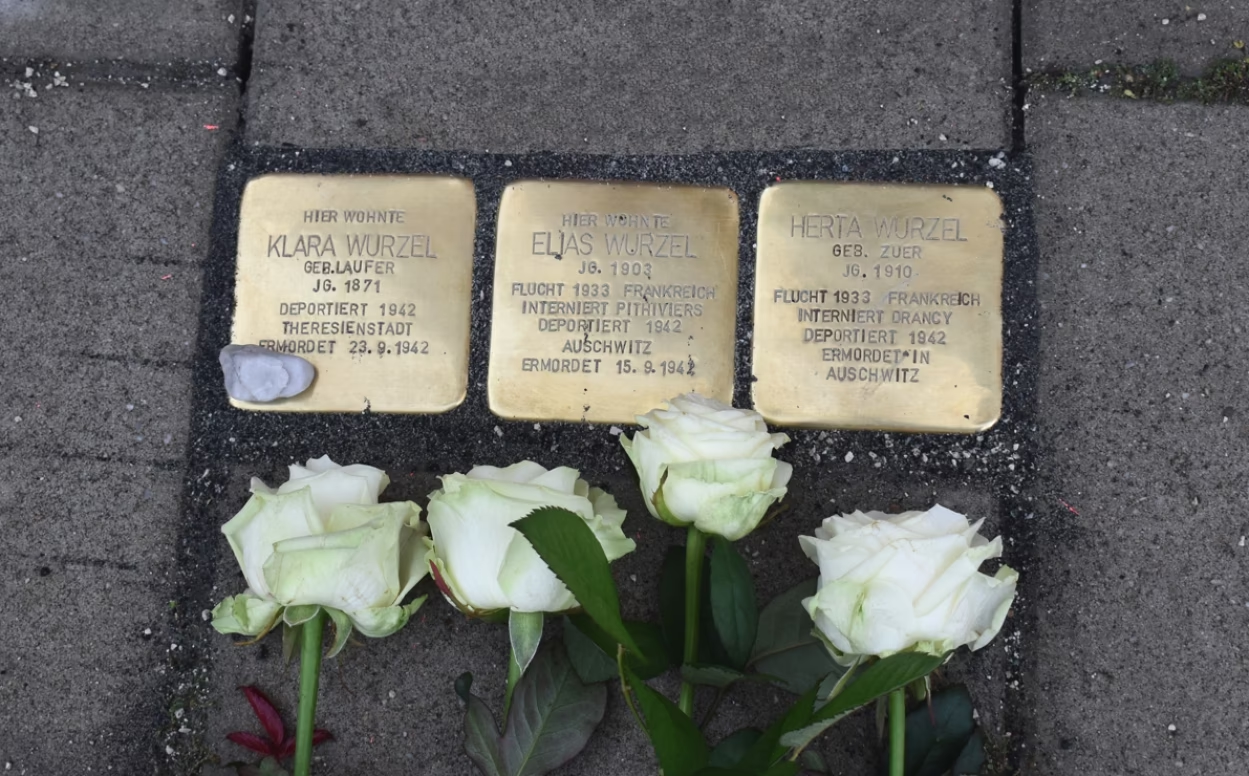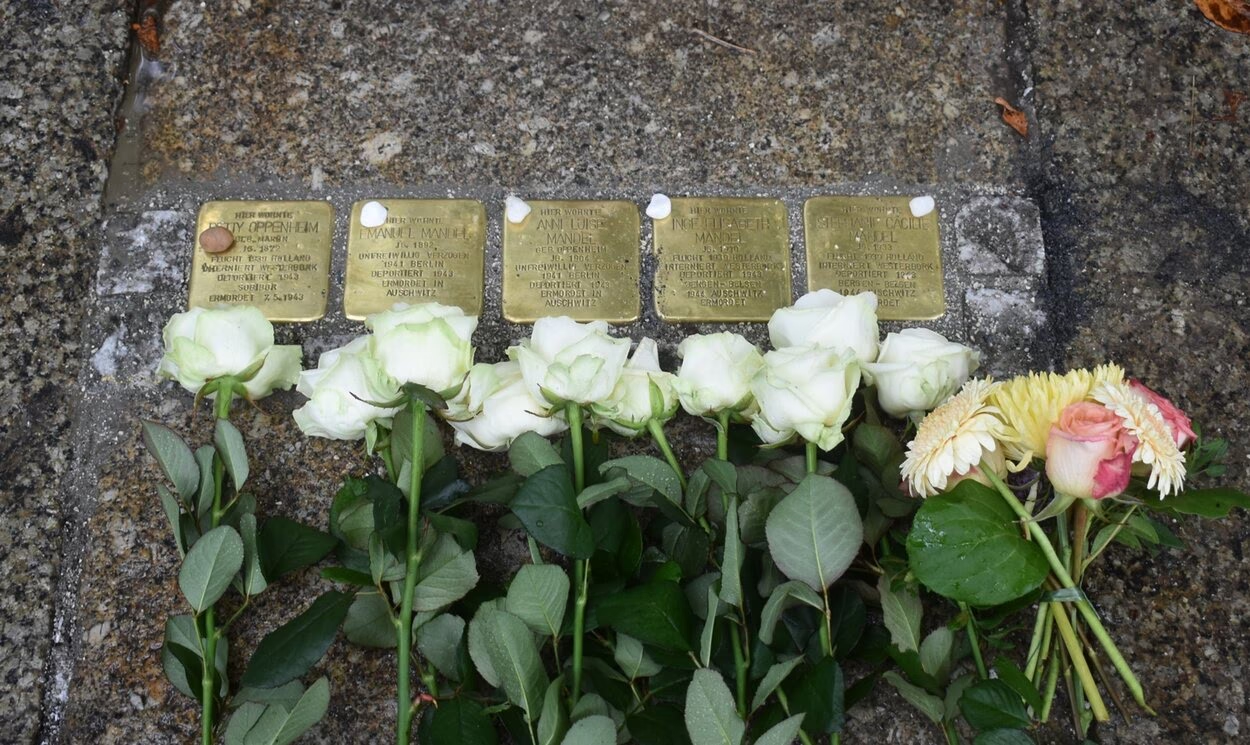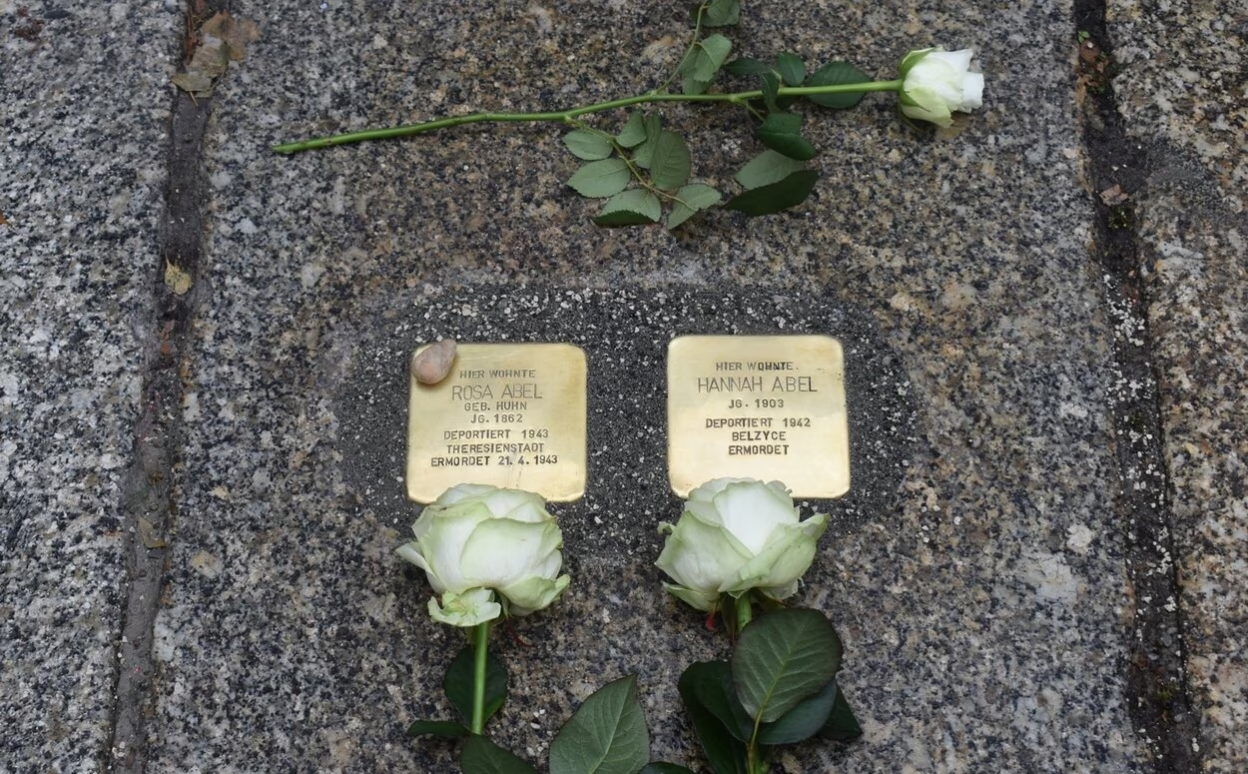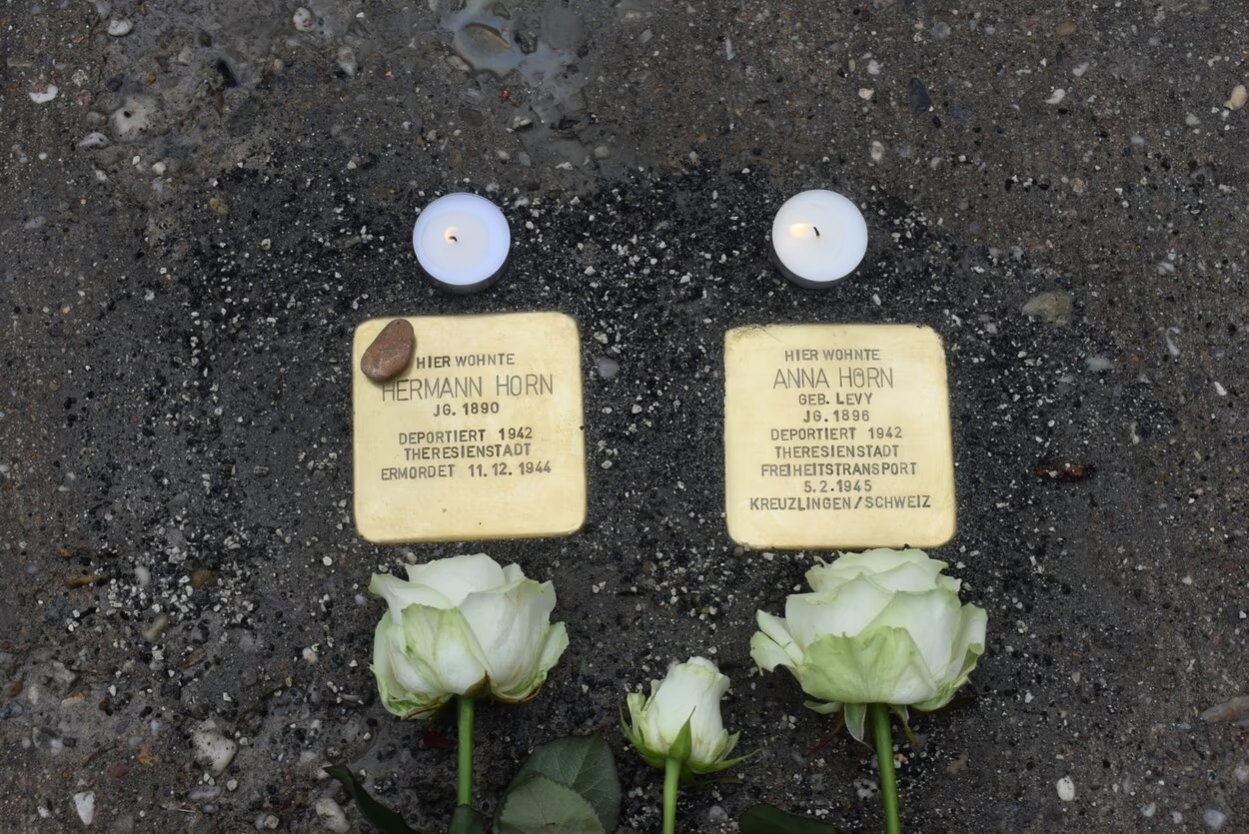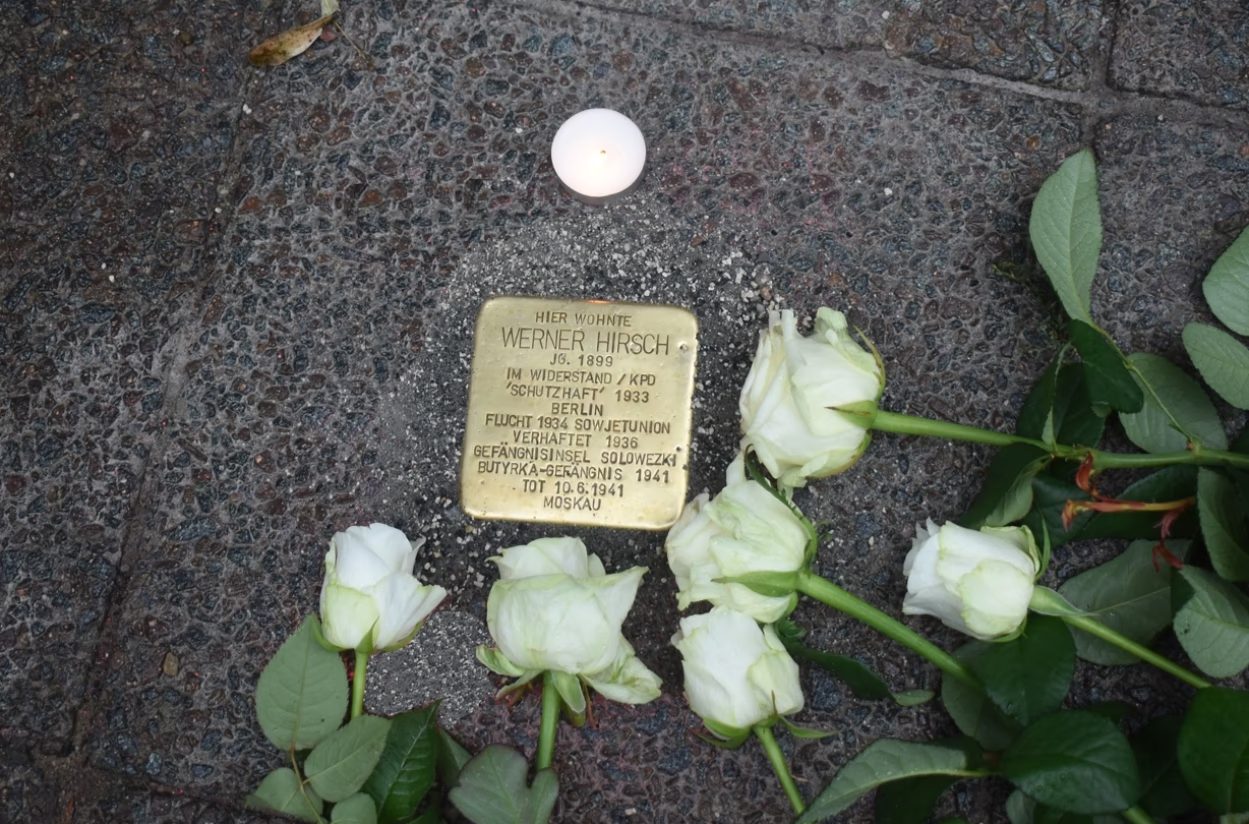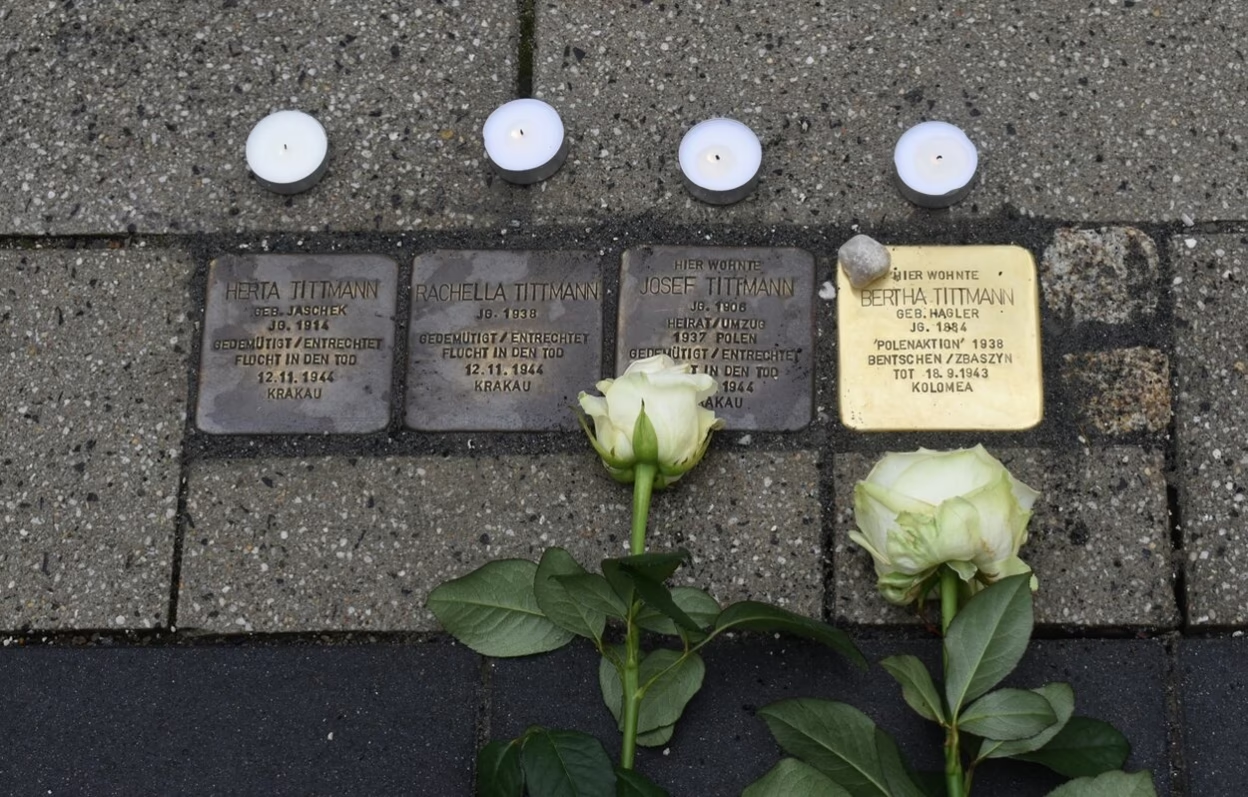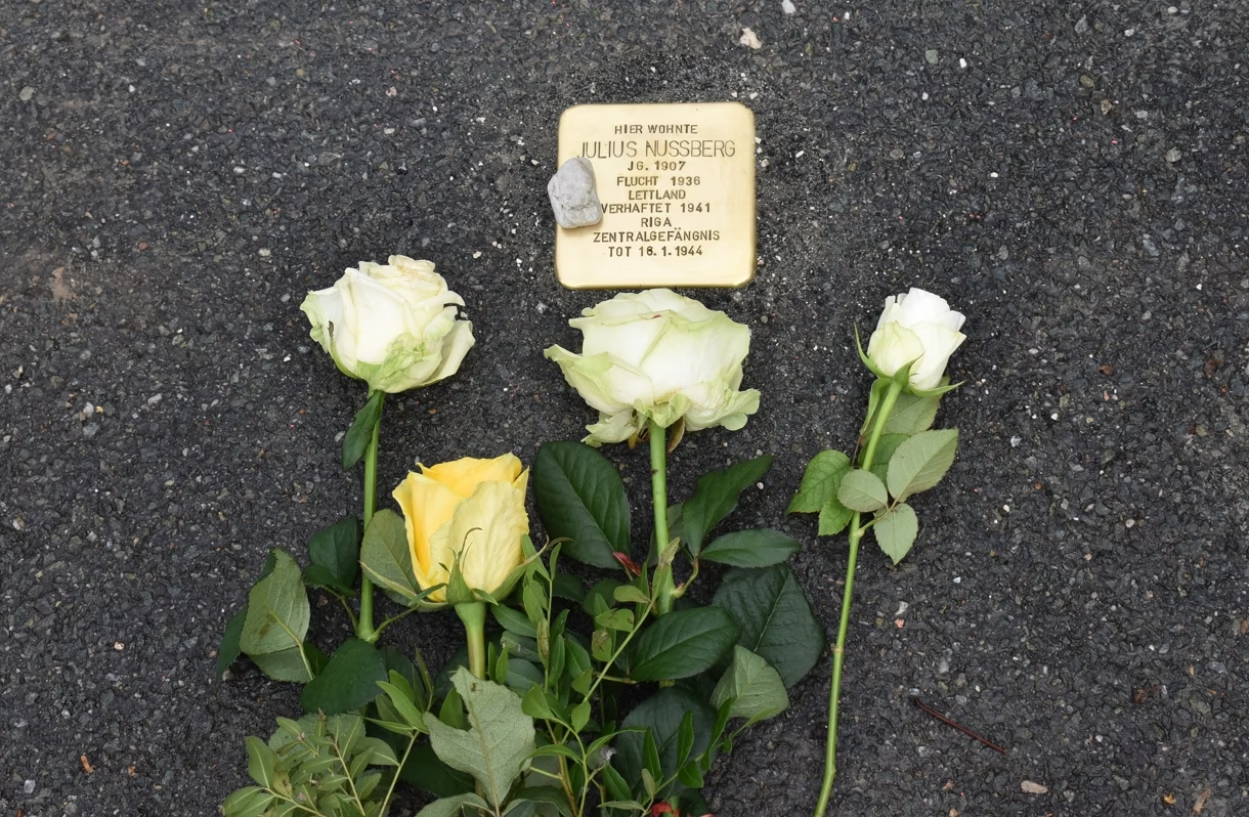Stumbling stone laying on 30 August 2018
19 new Stolpersteine were added to the 176 already existing in Chemnitz when they were laid on 30 August 2018.
Agricola street 15
The rabbi and historian Dr Hugo Fuchs was the spiritual leader of the Jewish community in Chemnitz from 1907 to 1939. On the afternoon of 9 November 1938, he and other well-known representatives of Chemnitz Jewry were arrested. The SA took the rabbi and his companions in misfortune by lorry to Stephanplatz, where the synagogue was already in flames. They were forced to watch "the destruction of their place of worship". Dr Hugo Fuchs was severely beaten by SA thugs and then taken to the police prison on Kaßberg. After his release, he emigrated to Argentina, where he died in a retirement home near Buenos Aires on 6 October 1949 after a long illness.
Sponsor: Dr Stephan Pfalzer
Weststraße 7a (formerly Weststraße 5)
Betty Oppenheim was married to the factory owner Hugo Max, who had already died in Chemnitz on 17 April 1921. The couple had three children: Fritz, Wilhelm Alexander and Anni. Anni, who had been married to the Viennese engineer Emanuel Mandel since 1930, was the only member of the family still living in Germany. The couple had two daughters: Inge Elisabeth (born 1930) and Stephanie Cäcilie (born 1933). Anni Mandel, her husband, her daughters and her mother became victims of the National Socialist murder of Jews in 1943/44. Their lives ended violently in the Auschwitz and Sobibor extermination camps.
Godparents: Betty Oppenheim: Beate Legler / Anni Mandel: Jasmin Richter / Emanuel Mandel: Martina Lange / Inge Mandel: Markus Auerswald / Stefanie Mandel: Tabea Böhme
Andréstrasse 11
Rosa Abel was the wife of the merchant Hermann Abel. They initially lived in Dessau, Ehrenfriedersdorf and Annaberg, where their five children were born: Max (born 1889), Erna (born 1890), Ludwig (born 1895), Alfred (born 1900) and Hannah (born 1901). The family moved to Chemnitz at Easter 1903. In 1940, Rosa and Hannah Abel had to move into the "Jews' house" at Apollostrasse 18. Hannah Abel was taken from her makeshift flat on 10 May 1942 and deported from the inner courtyard of the State Academy of Technology (now the Technical University) to the Belzyce ghetto near Lublin, where she was murdered. Rosa Abel was last admitted to the Jewish old people's home at Antonplatz 15 before being deported to the Theresienstadt ghetto on 21 June 1943. She died there of hunger and illness on 21 April 1944.
Sponsors: Dr Thomas Abel and pupils of the Montessori School Chemnitz
Beckerstrasse 11
Anna and Herrmann Horn lived in Cologne-Lindenthal until 1928, where their children Hannelore and Kurt were born in 1924 and 1927. The family then lived in Erdmannsdorf for a while. After a six-month stay in Holland, Hermann Horn moved to Chemnitz for work reasons. Hannelore and Kurt, who had to attend the special Jewish classes at Brühl from 1938, were able to emigrate to England in January 1939 with the help of the Kindertransport. Their parents stayed behind in Chemnitz. They were deported to the Theresienstadt ghetto on 8 September 1942. Hermann Horn died there of hunger and illness on 11 December 1944. His widow was taken from Theresienstadt via Constance to Kreuzlingen (Switzerland) on the only freedom transport on 5 February 1945. Anna Horn travelled from there to England to live with her daughter. She died in Manchester on 26 April 1960.
Godfather: Wayne Bizer (England)
Karl-Immermann-Straße 23 (formerly Schützenstraße 23)
Werner Daniel Heinrich Hirsch was born on 7 December 1899 in Deutsch-Wilmersdorf. From 1926 to 1928, Hirsch was first editor and then editor-in-chief of the KPD newspaper "Der Kämpfer" in Chemnitz. The Chemnitzer Druck- und Verlagsanstalt GmbH, which published the "Kämpfer", was based at Schützenstraße 23. He returned to Berlin in 1928. In 1932, Hirsch became secretary to Ernst Thälmann, with whom he was arrested in Berlin on 3 March 1933. He was taken into "protective custody". After his release from Nazi detention in 1934, Hirsch was suspected of having turned traitor during interrogations. He was therefore ordered by the CP headquarters to go to Moscow to clarify these accusations. Like many of the Comintern functionaries, Hirsch was a resident of the legendary "Lux" hotel. He was arrested there by the NKVD on 4 November 1936 after previously being under house arrest on absurd charges. On 10 November 1937, he was sentenced to ten years in prison by the USSR Supreme Court and deported to the notorious prison island of Solovetsky in the White Sea. He went on hunger strike there several times. Due to his poor health, he was transferred to Moscow's Butyrka prison, where he died on 10 June 1941, allegedly of heart failure.
Sponsors: VVN/BdA, Chemnitz City Association
Annenstrasse 20
Bertha Tittmann was the wife of the merchant Mendel Tittmann. The couple had tied the knot on 23 August 1905 in Kolomea (Austrian-Poland). With four children, they moved to Chemnitz at the turn of the year 1914/15. Mendel Tittmann died on 6 March 1919 a few days before his 41st birthday and was buried in the Jewish cemetery in Altendorf. The widow continued to live in Chemnitz until her deportation to Poland on 28 October 1938, most recently in the house at Annenstraße 23. Her eldest son Josef, who had been living with his family in Katowice since 1935, took her out of the Bentschen (Polish: Zbaszyn) internment camp and took her in. However, the Polish authorities forced Bertha Tittmann to move to Kolomea, where she died on 18 September 1943.
Godmother: Veronika Brandt (Chemnitz)
Zschopauer Street 55
Julius Nussberg was born on 13 October 1907 in Düsseldorf. He was the eldest son of the merchant couple Osias and Kreindla Nussberg. In 1908, they moved to Chemnitz, where more children were born between 1909 and 1919. After the end of the war, the family acquired the house at Zschopauer Straße 55, where his stocking factory was located in the rear building. He employed 15 workers and three assistants in the office. In the summer of 1923, Oskar Nussberg was granted German citizenship. In the midst of the global economic crisis, he had to take an oath of allegiance. Immediately after the NSDAP seized power, the family's naturalisation was revoked. No information is available about Julius Nussberg's childhood and youth. He emigrated to Latvia in 1936. A few months later, he reported on life in Latvia in the "Jüdische Zeitung für Mittelsachsen", which was published in Chemnitz. His parents had emigrated to Palestine in autumn 1935. Oskar Nussberg died a few months later in Tel Aviv. He was only 54 years old. Immediately after the Baltic Republic was occupied by Hitler's Wehrmacht in the summer of 1941, the extermination of Latvian Jews began. Julius Nussberg was arrested in 1941 and murdered in the central prison in Riga on 16 January 1944.
Sponsor: Katja Knop (Chemnitz)
Sonnenstraße 3
Klara Wurzel was married to the grocer Israel Aron Wurzel, who died in Chemnitz on 9 November 1939. The couple had married in May 1902 in Skole (Austrian-Poland), where their children Ester and Elias were born in 1895 and 1903. Another child, Lina, was born in 1911 in Chemnitz, where the couple had moved in 1910. The family lived on the Sonnenberg. Klara Wurzel was deported to the Theresienstadt ghetto on 8 September 1942, where she died on 23 September 1942 as a result of "heart disease", as the doctor treating her stated.
Elias Wurzel was deported from Pithiviers to the Auschwitz extermination camp on 17 July 1942. He was murdered there on 15 September 1942. Herta Wurzel, Elias' wife, was deported on 29 July 1942 on transport no. 12 from Drancy to Auschwitz, where she died immediately upon arrival.
Godparents: Klara and Elias Wurzel: Alke and Michael Schmidt family / Herta Wurzel: Sabine and Jens Lang family
Am Rathaus 8 (formerly Lange Straße 46)
Sabina Nathan was a remarkable woman about whose life little is known. From 1 April 1901, she was the owner of a ritual, i.e. kosher, lunch and dinner table. This was later located at Lange Straße 46. In the following years, Sabina Nathan successfully expanded her lunch table into a ritual restaurant with a small boarding house. She received help from her unmarried sisters Johanna and Julie. They lived as subtenants with their sister, who was also unmarried. Sabina and Johanna Nathan were deported to the Theresienstadt ghetto on a large collective transport on 7 September 1942. Johanna died there on 16 February 1943 and Sabina's life ended in the ghetto on 6 July 1944. Julie Nathan had already been committed to the Jacoby asylum in Bendorf-Sayn in the course of 1939. This was the only Jewish sanatorium and nursing home in the Nazi Reich that was allowed to continue admitting Jewish patients. Julie stayed there until 22 March 1942, before she was deported to the Izbica ghetto along with other inmates.
Godparents: Uwe Dziuballa (Chemnitz) - Pupils and teachers of the Georgius Agricola Grammar School Chemnitz - Dr Jürgen Nitsche (Mittweida)


